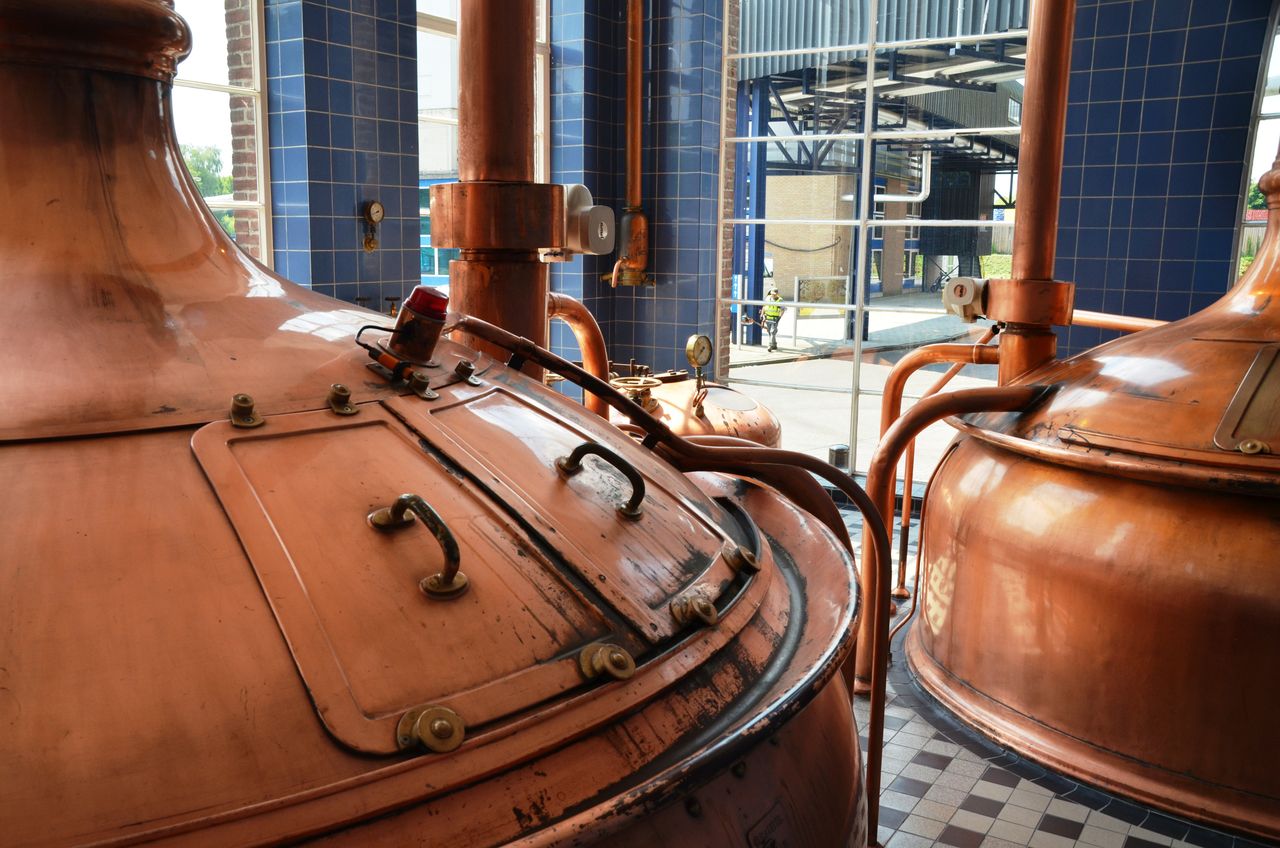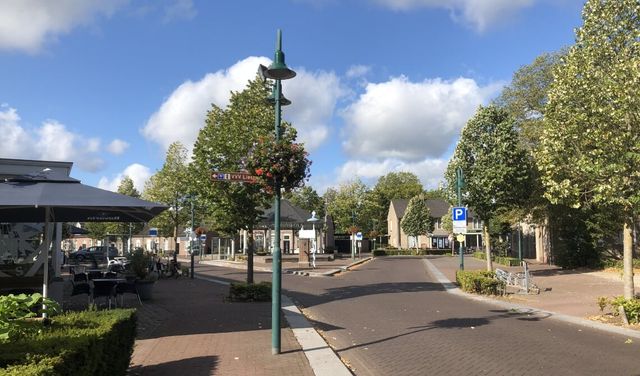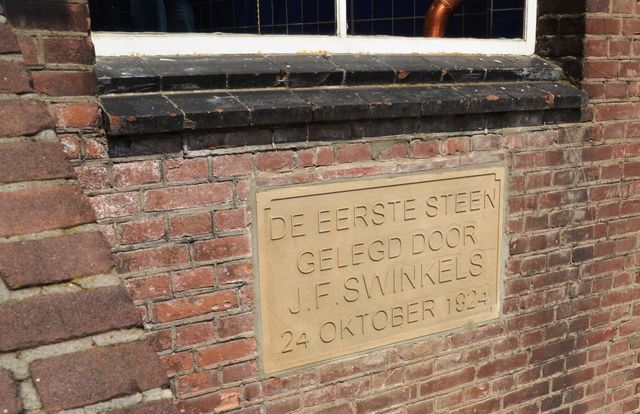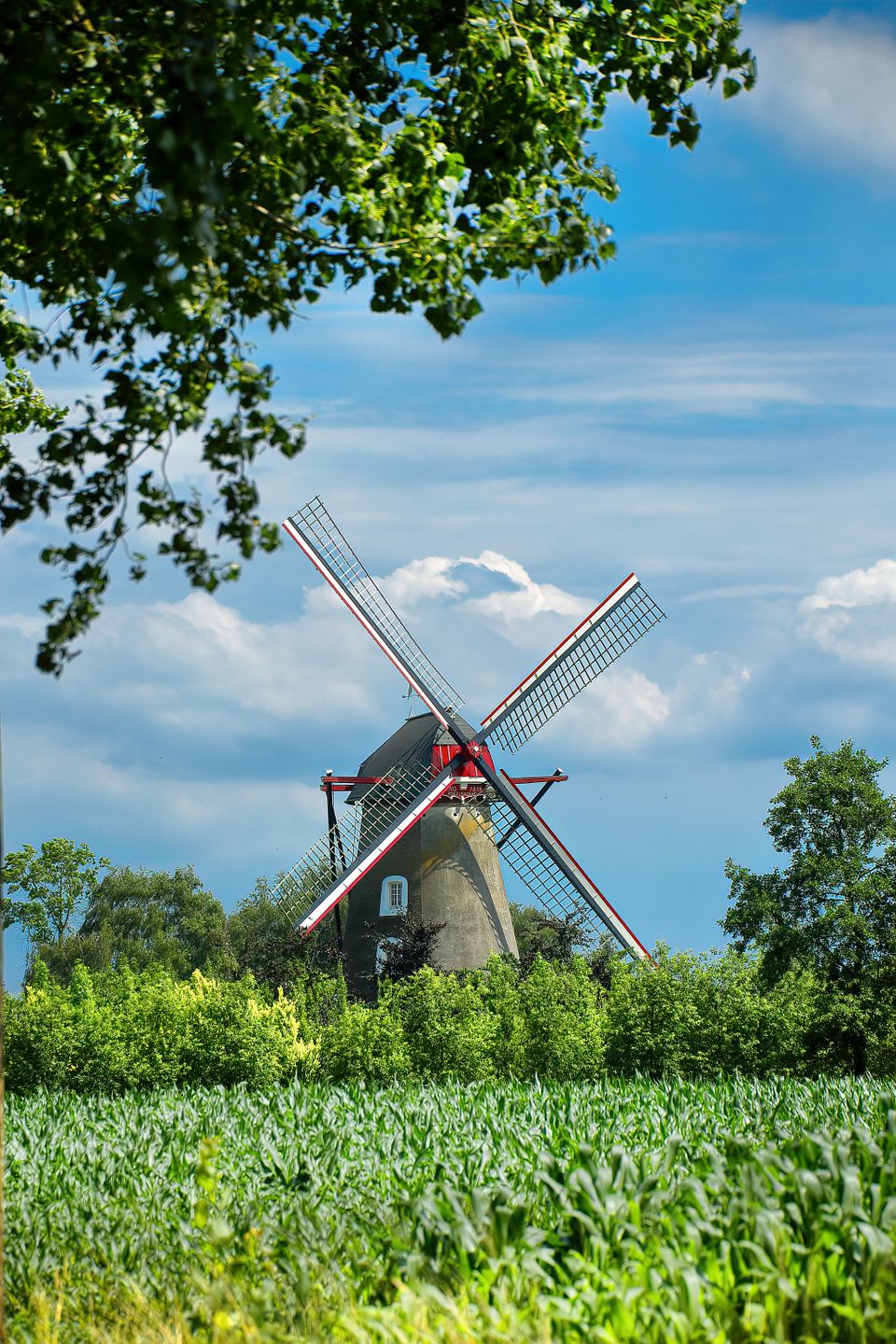Bavaria - Brewery
Lieshout is best known for its Bavaria beer brewery.
7 generations of beer brewed according to a unique family recipe
Under the management of the Swinkels family, beer has been brewed according to a unique family recipe for 7 generations at the Bavaria brewery in Lieshout (Brabant). This is how the brewer has been guaranteeing the best quality since 1719. Pure ingredients are the basis for quality, which is why Bavaria is brewed using natural mineral water from its own spring and why Bavaria malts its own barley.
History
Brewery 'De Kerkdijk' in Lieshout was first mentioned in 1719. The Moorees family brewed traditional beer on a small scale. This had probably been the case since 1680. One of the daughters married a Swinkels. Their descendants took over the brewery in 1764. While small-scale breweries were increasingly having to leave the scene, the Swinkels family managed to keep going. This was achieved by constantly responding to changes in the market. In 1925, for instance, the Swinkels brothers decided to switch to low-fermentation beer (pilsner). This despite the fact that it was more common at the time to brew high-fermentation beer. A milestone that ultimately prepared the brewery for the future.
Family business
From 1773 onwards, the brewery has been continuously owned by the Swinkels family. As of spring 2014, the Bavaria management consists entirely of members of the 7th generation. Including the known ancestors, the company has been family owned for ten generations and is therefore one of the oldest Dutch family businesses.
Quality
Over the years, Bavaria has managed to secure leading positions in niche markets with various product introductions. As the founder of the only truly alcohol-free beer, Bavaria has been able to build up a strong position. Both in the Netherlands and in other parts of the world. Bavaria exported its first alcohol-free beer to the Middle East in 1978. Not least because of the religious background in that region. In 2010 Bavaria introduced the first alcohol-free wheat beer onto the Dutch market. This marked a new lease of life for the previously stagnant non-alcoholic market.
Facts about Bavaria
-Largest independent brewery in the Netherlands
One of the oldest family-run businesses in the Netherlands
-100% family business
-The 7th generation of the Swinkels family is now at the helm
-Annual production: more than 7 million hectolitres of beer
-One third is destined for export to more than 130 countries
-About 1,800 employees worldwide
-Bavaria has natural mineral water from its own spring
The village - of Lieshout
Lieshout (local dialect: Liessent) is a village and former manor, located in the Meierij of 's-Hertogenbosch. Lieshout is part of the municipality of Laarbeek. Until 1 January 1997, there was an independent municipality of Lieshout encompassing the villages of Lieshout and Mariahout.
The oldest known spelling of Lieshout is Litholz, found in a deed from 1146. This name originated from lide = road, gang, path and holt = forest. The lide was the path, which ran along the eastern edge of the dense forest (the later Lieshouter Bosch) as part of a Roman trade route. The path lay in a predominantly marshy strip and formed the passage between two higher areas. This lide or passageway has given its name to the dense compact forest as the most prominent landmark there: the lides-holt or passageway forest. Another etymological explanation, one that is often quoted, is Bos van Lies, a high stemmed forest with lots of groin grass. This explanation is based on the spelling Lishot, as it appears in a late 12th-century copy of a deed from 1199.
Besides impressive sights and monuments, Lieshout's nature is also absolutely worth a visit!
Churches - and monasteries
The owner of the Lieshout estate probably had a church built near his knight's homestead in the 11th century. At this time, there was a castle on the site of the present hamlet of 't Hof, which lies to the south of the Wilhelmina Canal. Little is known about the first church in Lieshout that stood near the castle at 't Hof. The second, medieval church stood on the same spot. Drawings of it have been preserved. It was taken over by the Reformed in 1648, but as the Reformation had no supporters in Lieshout, the church at 't Hof remained empty ever since.
The St. Servatius Church in Lieshout was built on the historic site where the enclosed Ribbius House used to stand, i.e. on the corner of Ribbiusstraat and Heuvelstraat. The new church is also completely surrounded by the wide old moat, which was maintained. The pastor of this church was Pastor Schoenmakers. The tender took place on Monday afternoon 21 March 1961 at the rectory by private treaty. The lowest bidder was W.A. van der Pas of Oss, for 353,380 guilders. The work was therefore awarded to this contractor. The architect for the work was J. de Reus from Oss. The first spade for the new church went into the ground on Tuesday 23 May 1961. This was just two days after the fortieth anniversary of pastor C. Schoenmakers, who had been in Lieshout since 1944. On this anniversary the parishioners had already donated 1300 guilders to him to buy the necessities for the altar in the new church. The laying of the foundation stone took place on 15 October 1961.
If one were to give a brief description of the church, one could call it: "Fortress of God", because it resembles a fortress through its tower-like extensions and because it is completely surrounded by the wide old moat. The main lines are sober and austere. The walls are built in different shades of coloured brick. The bricks are interlocked in an irregular manner. The main entrance is stained glass on both sides. The construction is such that the ceiling is suspended from a cantilevered steel roof. This has created a large square space, without annoying pillars that could obstruct the view of the altar. The acoustic qualities proved to be excellent. The floor is a "pebble in concrete" floor, which works very well in connection with the masonry. The altar is placed at a height, and consists of a sculpture base with the altar shelf on top, which weighs no less than 3.5 tons. The sculpture on the altar's foot represents the miraculous bread and fish, the rain of manna and the wedding at Cana. The goldsmith H. van den Thillard designed the cross, candlesticks and tabernacle. Under the altar, marble was laid, the only material from the old church. The new church cost a total of 502,000 guilders.
De Heuvel
De Heuvel, a central triangular square with a bandstand and a pump. The former town hall is also located here. Furthermore, there are three bronze statues in the immediate vicinity of De Heuvel:
-De Vaandeldrager, from 1990, by Niek van Leest
-De Raoper, from 1958
-Save and Play, from 1990
Other figurines are:
-Bearded couple, near the Franciscus court,
-Future by playing together, guild brother and son as tambour, by Toon Grassens, at the Servaasstraat.

History
Lieshout as a village began in the eighth century, when the Franks founded an estate in an unpopulated area in the southwest of the present municipality of Laarbeek in the Dutch province of North Brabant. Human habitation at the site existed already in prehistoric times and the area was continuously inhabited between approximately 1000 BC and 225 AD.
The reforms carried out during and after the French era put an end to the administrative powers and jurisdiction of the manor of Lieshout. The jurisdiction was assigned to higher authorities and the administrative functions were finally, with the introduction of the Municipalities Act in 1851, assigned to the municipality of Lieshout. As for the lordly rights, these were declared null and void in 1795, but later some rights were restored. In 1842 the Bout heirs sold the goods and rights they owned in Lieshout to Albert Bots, an industrialist from Helmond. Bots and his heirs initiated buy-out procedures by which they realised all their rights, except for the hunting and fishing rights. In 1887, the Bots heirs sold their Lieshout property, including the remaining rights. In 1899, the judge ruled that the delicious hunting and fishing rights had long expired.

The Weapon - of Lieshout

The coat of arms probably represents the parish saint, but this is not certain. Lieshout was a fief of Brabant to the abbey of Floreffe. In the 17th century, the abbots of Floreffe also possessed the high jurisdiction and so the fief of Brabant had de facto expired. In 1698, the seigniory was sold to Postel Abbey and in 1714 to Adriaan Bout.
A schependomszegel is known since 1518, but the seal is probably older. In the 16th century, it was replaced by another seal that was used until 1811. The seal shows a mitred abbot with a crosier and key. This is probably the abbot of Floreffe, holding an attribute of the parish saint (the key). In 1815, the mayor wrote that it was St Servatius himself, but it is also possible that it is an abbot's figure.

